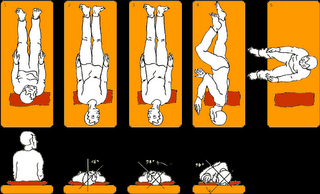| This is another problem in the inner ear characterized by sudden occurrence of dizziness or a spinning sensation when the head is moved. The semicircular canals which are found in the inner ear normally contain fluid the movement of which helps the brain detect body position and maintain balance. As we age, or after a head injury, or after an inner ear infection, or any other disorder affecting the inner ear, small calcium carbonate crystals called otoconia or otoliths collects in a part of the inner ear called the utricle. They are normally attached to a membrane inside the utricle. What causes the vertigo? In BPPV, a change in head position cause these crystals to move through the semicircular canal. They strike against nerve endings inside thus causing the vertigo. Aside from vertigo the person may also feel dizzy, lightheaded, with a sense of imbalance, and nausea. If the condition is severe there is also vomiting. 
A maneuver called “Epley’s maneuver” is usually done to move otoconia away from the semicircular canals. After the procedure, the individual needs to maintain head in an upright position for 24 hours. Medications can also be given like sedative-hypnotics, antihistamines, and anticholinergics to alleviate the symptoms.
|